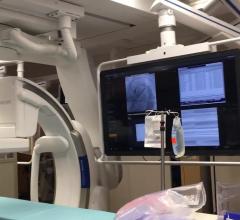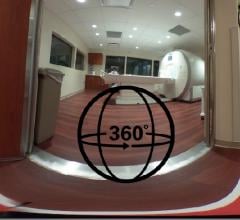Medtronic plc announced its entrance into the guide extension catheter market with the global launch of the Telescope Guide Extension Catheter. The newly designed catheter is used to provide additional backup support and access to distal lesions. Guide extension catheters help deliver coronary stents, balloons and other interventional devices during angioplasty procedures that help to restore blood flow through the coronary and peripheral arteries.
Medical diagnostic artificial intelligence (AI) company MaxQ AI announced that Accipio Ax will begin shipping in August and will be available as the second part of the Accipio ICH Platform. Accipio Ax will provide new tools to support clinical assessment of intracranial hemorrhage (ICH). Radiology departments, emergency room and neuroradiology teams across the U.S. and the EU will soon be able to access a comprehensive solution for ICH triage through workflow prioritization and slice-level preview. Accipio Ax includes the exclusive Accipio Ax SliceMap, an integrated view which guides clinicians rapidly to computed tomography (CT) slices with suspected ICH without leaving their picture archiving and communication system (PACS) viewer.
This is a sample of the 3-D printed hearts and coronary anatomy models created from patient CT scans to enable ...
Providing exceptional cardiovascular care for patients to achieve the best possible outcomes is the number one goal for ...
Researchers at the Icahn School of Medicine at Mount Sinai have demonstrated that stem cells derived from the placenta known as Cdx2 cells can regenerate healthy heart cells after heart attacks in animal models. The findings, published in the May 20 issue of Proceedings of the National Academy of Sciences (PNAS), may represent a novel treatment for regenerating the heart and other organs.
Philips announced the launch of the new IntraSight interventional applications platform. The secure, application-based platform offers a comprehensive suite of clinically proven instant wave-free ratio (iFR), fractional flow reserve (FFR), intravascular ultrasound (IVUS) and co-registration1 modalities to simplify complex interventions and speed routine procedures.
A newly released expert consensus statement proposes a classification schema for cardiogenic shock (CS) that will facilitate communication in both the clinical and research settings. The document was published online in the Society for Cardiovascular Angiography and Interventions (SCAI)’s Catheterization and Cardiovascular Interventions journal, and is endorsed by the American College of Cardiology, American Heart Association, the Society of Critical Care Medicine and the Society of Thoracic Surgeons.
Cardiac positron emission tomography (PET) is growing in popularity among cardiologists because it provides the ability ...
This is a walk through of the primary structural heart hybrid cath lab at Henry Ford Hospital in Detroit, Mich. It is ...
A demonstration of how to calculate the neo-left ventricular outflow tract (neo-LVOT) on CT imaging for a transcatheter ...
This is a 360 degree photo of a Siemens Somatom Force 64-slice, dual-source computed tomography (CT) system installed at ...
When performing radiofrequency (RF) ablation to treat cardiac arrhythmia, medical professionals must balance the safety ...
This is a dedicated cardiac Siemens 1.5T MRI system installed at the Baylor Scott White Heart Hospital in Dallas. The ...
Miami Cardiac & Vascular Institute announced the implementation of Philips’ Ingenia Ambition 1.5T MR, the world’s first magnetic resonance imaging (MRI) system to enable helium-free operations. The technology offers cutting-edge imaging techniques that deliver high-quality images faster while providing an improved, more comfortable experience for patients, according to Philips.

With its increasing role in medical imaging, artificial intelligence (AI) gradually is becoming a go-to technology for ...
Change Healthcare Cardiology Hemodynamics is an integrated hemodynamic monitoring system for monitoring vital signs and ...
Biopharmaceutical company CellPoint plans to begin patient recruitment for its Phase 2b cardiovascular imaging study in patients suffering from coronary artery disease using the company's new one-vial Oncardia (ethylenedicysteine-glucosamine) kits. The 60-patient trial study is being conducted in the U.S.

According to the U.S. Department of Health and Human Services (HHS), about 70 percent of organizations are not compliant ...
May 17, 2019 — The U.S. Food and Drug Administration (FDA) this week approved Fragmin (dalteparin sodium) injection, for ...


 May 21, 2019
May 21, 2019















